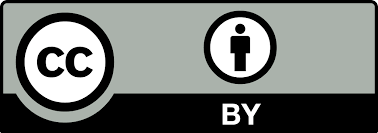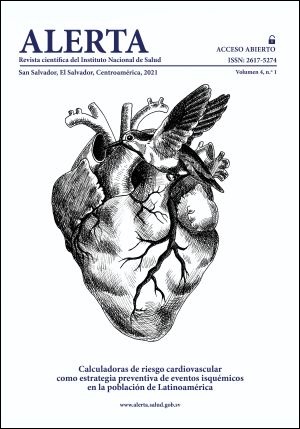Containment actions in El Salvador facing the COVID/19
DOI:
https://doi.org/10.5377/alerta.v4i1.10762Abstract
El Salvador, has been one of the last countries in the Americas to report COVID-19 cases. Since January 2020, the Government implemented a diversity of preventive measures, even before the reporting of the first cases. One of the foremost measures taken was the home quarantine for people with or without COVID-19 related symptoms. To avoid contagion, measures were taken to forbid the entrance of tourist to the country coming from China and other countries such as Italy, South Korea, Spain, Germany and Iran.
Measures were intensified as the COVID-19 cases worldwide and particularly in Latin America were increasing. Testing to detect the COVID-19 was implemented in February 2020. On march 13th 2020, the Government issued a home quarantine at national level for 30 days.
During that time, all kind of work, academic or tourism related activities were suspended, with the exception of those activities related to provide supplies for the pandemic. Crowds of people all over the territory were prohibited and the public and private health system external consultations were suspended giving priority to the sanitary emergency.
On March 14th, the commercial flights were prohibited, and on March 17th all international borders and non-official points of entries were closed. Lately, and with the increment of positive cases in the central American region, a nationwide state of emergency was pronounced.
On March 18th the first COVID-19 positive case was identified in the country, a Salvadorean national coming from abroad. The first quarantine lost effect as of April 11th, being prorogated for four days to give time to the National Legislative Assembly to discuss a new quarantine. A second 15 days quarantine was approved, which was prorogued for another 15 days on April 30th.
As of June 16th, the population was allowed to circulate and do some activities with some restrictions and the recommendation to implement biosecurity measures such as the personal distancing, use of masks and hand sanitizers. Measures were applied in commercial establishments, offices, public transportation and public areas, to reduce the infection risk for the population. The public and private industries and academic sectors adopted the strategy of home working for most of their employees.
Notwithstanding, every day activities were gradually reestablishing and, for the end of the year 2020, all activities were almost completely regained, except the academic activities of the public and private education sector, which continued in a virtual mode.
According to government data, once the house quarantine was over, the contagion increased. During the first week of August, the first epidemiological curve presented a maximum of 449 cases. Lately, a rapid reduction of positive cases started, presenting a very different performance from what was expected. On the second week of September, a new increment was observed, reaching 330 daily cases.
All countries around the world presented under reporting of cases and deaths due to the magnitude of the pandemic emergency. Some countries have taken steps to undertake seroprevalence studies to develop an approximation to the real number of deaths by COVID-19. In El Salvador, the official reporting of COVID-19 suspicious deaths has been made based on data from those who died having being tested and confirmed by RT-PRC tests.
The epidemiological surveillance of new COVID-19 cases, has been strengthened through the installation of mobile booths for sampling. This can present an impact on cases, given that asymptomatic cases can be easily detected, providing the opportunity to take epidemiological measures when necessary. Nevertheless, distribution and use of tests should be made taking into consideration the epidemiological aspects, priorities, and the identification of suspected cases, populations at risk, age groups and so forth.
The impact of the pandemic has bared a toll upon the health system, the economy and the social ways of the population. General consultations were temporarily suspended as well as those related to specialties, being evident in the reporting system, where consultations, controls and new case reports have diminished. The population will be affected if they are not attended in their health needs by an adequate medical consultation or control, and can adopt a self-medication behavior developing other types of illness or worst, the resurgence of contagious diseases which were already controlled under a strict surveillance in pre pandemic time.
Despite all preventive measures implemented to reduce the risks of transmission, it is difficult to determine if they have had a positive impact in the pandemic control, due to a diversity of factors such as the pandemic occurrence and intensity, availability of laboratory tests, the characteristics of the country and of the Salvadorean population, which can be different from other countries. Notwithstanding, it is important to continue developing research that can lead to the prevention of the illness.
In the following years, no doubt, the social and economic impact will be perceived by the population in general, and particularly by those in conditions of vulnerability; therefore, early mitigation measures are in order to deter the negative sequels of the pandemic.
Finally, it is important to highlight the fact that the results concerning the pandemic care in the country should be presented to the attention of different scientific media given that this is the way to scientifically and epidemiologically report it, to contribute to the decision making for a better understanding and a better approach to the pandemic in El Salvador and other countries. Therefore, the country’s scientific community must take this opportunity to make the best with the scientific information and platforms for the publication of their research, data and epidemiological analysis.
Downloads
2871
Downloads
Published
How to Cite
Issue
Section
License
Copyright (c) 2021 José Alejandro López, Rhina Domínguez

This work is licensed under a Creative Commons Attribution 4.0 International License.
Privacy statement:
Alerta articles are published under license Creative Commons 4.0 CC BY: https://creativecommons.org/licenses/by/4.0/
Authorship rights
Revista Alerta gives the authors exclusive control of their work and the right to be acknowledged and cited.





